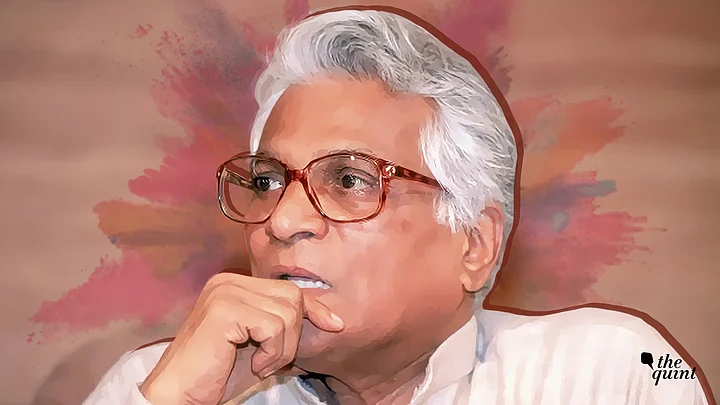The over 40-year-old Baroda Dynamite Case was one of the important chapters in the life of former Union minister George Fernandes, who was jailed during his fight against the imposition of Emergency by the then Indira Gandhi-led government.
Fernandes, 88, who served as the defence Minister in the Atal Bihari Vajpayee government, died in Delhi on Tuesday, 29 January following a prolonged illness.
He was arrested in June 1976 for conspiracy to procure dynamite sticks to blow up bridges and vital rail and road infrastructure and the case was handed over to the Central Bureau of Investigation (CBI).
An activist who worked with Fernandes during the Emergency period told PTI that by procurement of dynamite, the plan was to give a message to the government that they would “not take imposition of Emergency lying down”.
Fernandes was one of the leaders who had gone underground for resistance against the imposition of Emergency. He slipped into Gujarat in July 1975 and continued to oppose Emergency along with other socialists of that time.
The CBI charge sheet in the Baroda Dynamite Case said,"investigations show that on declaration of Emergency in the country on 25/6/75, George Fernandes went underground and decided to arouse resistance against the imposition of the same and over-awe the government by use of show of criminal force."
Fernandes was shown as the 'mastermind' of the conspiracy and as accused number 1 in the charge sheet filed by the CBI in a Delhi court where the case was heard.
The charge sheet had named 25 accused in all.
Fernandes reached Ahmedabad around mid-July 1975 and held secret meetings with co-accused, the charge sheet said, adding he “entered into criminal conspiracy to do illegal acts to overthrow the government”.
"It was planned to procure dynamite sticks and accessories like detonators and fuse wire using one BharatPatel," it said.
Before the explosives were procured, Patel arranged demonstrations for the use of explosives at a stone quarry in Halol, the charge sheet said.
"After seeing the explosives' destructive power, George Fernandes expressed his satisfaction by saying he had found what he was looking for," it said.
"It was decided to use the explosives for blowing up bridges and vital rail and road links to create widespread chaos with the ultimate object of overthrowing the established government at the Centre," the charge sheet said.
Apart from ten bags of dynamite sticks obtained from a stone quarry, 200 detonators and eight rolls of fuse wire were later procured, it said, adding dynamites were sent to different parts of the country and an explosion was also triggered in Mumbai using the same.
The Baroda (now Vadodara) police had found the explosives during a raid in Raopura area of the city.
Fernandes was arrested in June 1976 along with 22 others from different parts of the country and lodged in TiharJail in Delhi.
In his defence before the court, Fernandes denied such a conspiracy on his part and said the CBI charge sheet was “cooked up”.
"My fight against the dictatorship was born out of theconviction that evil should be fought, but it never entitledkilling or what the prosecution say 'criminal force'," Fernandes said in his defence.
Social activist Prakash Shah met Fernandes and worked to fight the Emergency when the latter was staying underground in Gujarat.
"There was no intention of killing anybody by triggering mild explosions. The idea was to give a message to the then government that we will not take this lying down," Shah said.
"Dynamites were procured and ferried in a car at that time," he said.
Later, when the Janta government of Morarji Desai came to power, the cases against Fernandes and others were withdrawn.
(At The Quint, we question everything. Play an active role in shaping our journalism by becoming a member today.)
